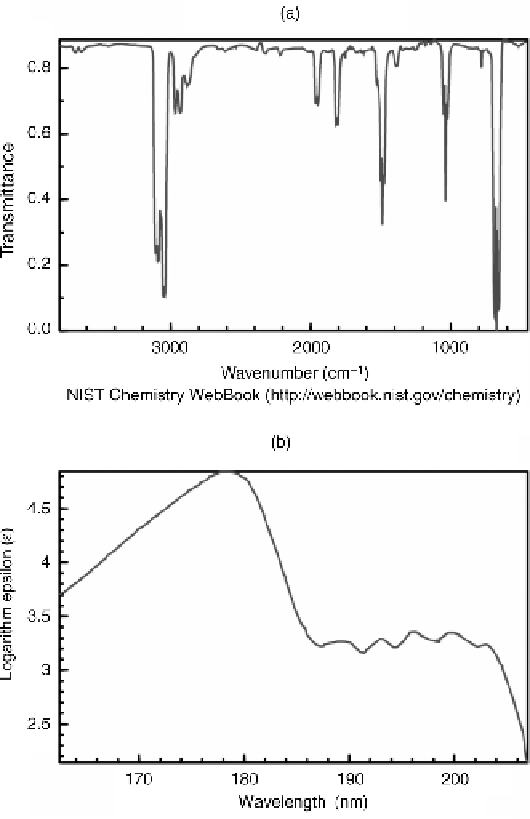Environmental Engineering Reference
In-Depth Information
Figure 8.11
A comparison of (a) IR spectrum (top) and (b) UV spectrum (bottom) of benzene.
Logarithm epsilon (e) denotes concentration-corrected absorbance, where e is the molar absorptivity
(see sec 8.1.4). Source: (a) Coblentz Society, Inc., ''Evaluated Infrared Reference Spectra'' and
(b) V. Talrose, E.B. Stern, A.A. Goncharova, N.A. Messineva, N.V. Trusova, M.V. Efimkina, ''UV-Visible
Spectra,'' in NIST Chemistry WebBook, NIST Standard Reference Database Number 69, Eds.
P.J. Linstrom and W.G. Mallard, June 2005, National Institute of Standards and Technology, Gaithersburg
MD, 20899 (http://webbook.nist.gov)
composition of gases and atmospheric contaminants with potentially
sensitive, rapid, and highly specific methods.
Far-infrared (FIR):
50-1,000
m (200-10 cm
1
). The far-infrared range
has limited use because of experimental difficulties. FIR is mostly for the
m

Search WWH ::

Custom Search